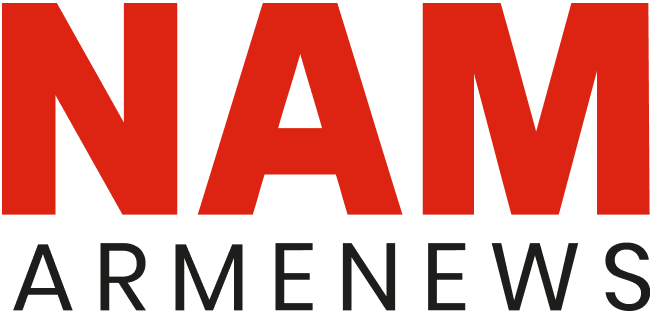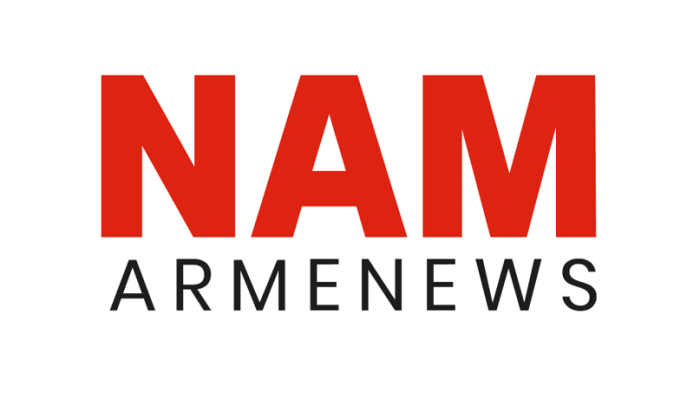Source: Nezavisimoe Voennoe Obozrenie, No. 5, February 9, 2007, p. 2
Anatoly Tsyganok
An overview of military forces in the Greater Caucasus; The Greater Caucasus includes territories belonging to six UN member states (Russian Federation, Armenia, Azerbaijan, Georgia, Turkey, Iran) and three unrecognized republics (Abkhazia, South Ossetia, Nagorno-Karabakh). Analysts are keeping close watch on this region’s militarization processes.
The Greater Caucasus certainly isn’t the most peaceful part of the world these days – but it’s not the only place where the situation threatens to unleash new wars. Moreover, in contrast to other hot-spots, at least this region doesn’t have any large-scale hostilities under way, with millions of people being killed or injured. Yet this particular region is getting very intense attention from leading world powers, inter-state alliances, and various international organizations. And this is entirely understandable: it is a highly significant region from the geopolitical, economic, and military-strategic standpoints.
The Greater Caucasus includes territories belonging to six United Nations member states (Russian Federation, Armenia, Azerbaijan, Georgia, Turkey, Iran) and three unrecognized republics (Abkhazia, South Ossetia, Nagorno-Karabakh). Relations between them aren’t exactly straightforward, to put it mildly. That’s why analysts are keeping such a close watch on this region’s militarization processes. Experts estimate, for example, that the Russian Armed Forces have a total of 300,000 personnel in the North Caucasus.
The former Soviet republics
Of the former Soviet republics, Azerbaijan has the most numerous Armed Forces: 95,000 personnel, including 85,000 in the Army, 8,000 in the Air Force and Air Defense Forces, and 2,000 in the Navy. Aside from the Armed Forces, Azerbaijan also has a National Guard (2,500 personnel), Interior Ministry Troops (12,000), and Border Guards (5,000). Evidence of Azerbaijan’s militarization can be found in its defense spending: in 2007 this will exceed the entire budget of Armenia, with which Baku has almost-hostile relations.
The Army of Azerbaijan consists of five army corps. The First, Second, and Third corps are concentrated against Nagorno-Karabakh, although part of the Second corps is deployed on the Azeri-Iranian border. The Fourth (Baku) corps covers the capital city and the shoreline; the Fifth corps is based at Nakhichevani. The Army has 292 tanks, 706 armored vehicles, 405 artillery pieces and mortars, 75 BM-21 multiple rocket launcher systems, and 370 anti-tank rocket launchers.
The Air Force of Azerbaijan (61 combat aircraft, 46 auxiliary aircraft) includes a combined aviation regiment, a fighter and bomber squadron, and separate squadrons of fighters, reconnaissance planes, and training aircraft. Main airbases: Kyurdamir, Zeinalabdin (equipped with a NATO air traffic monitoring system), Dallyar, Gyandzha, Kala.
The Air Defense Forces of Azerbaijan include four air defense brigades, one air defense regiment, and two separate radar battalions. They are equipped with S-200, S-125, S-75 (35 launchers), Krug, and Osa air defense systems.
The Navy of Azerbaijan has a brigade of surface vessels (guard division, landing vessels division, mine-sweeper division, search and rescue division, training vessel division), a national waters security brigade, a marines battalion, an intelligence and special assignment center, and coastguard units. The Navy has a total of 14 warships and patrol boats and 22 auxiliary vessels, but not all of them are serviceable at present, due to various technical problems and a shortage of experienced specialists.
Azerbaijan’s main military-strategic partner is Turkey. Educating military personnel in the pan-Turkic spirit is considered highly important. At the same time, the Azeri leadership is striving to make Azerbaijan a NATO member. As of January 1, 2007 the Army staff and the Baku corps have been operating on the basis of NATO documents. Azeri officers are trained according to NATO programs. Overall, the combat readiness of the Armed Forces of Azerbaijan is not at a high level, and they are not ready for large-scale military action. Experts say, however, that Azerbaijan’s firepower has increased significantly since it took delivery of 9A52 Smerch 300mm multiple rocket launcher systems from Ukraine in 2004 (some analysts even claim that the addition of these weapons could disrupt the military balance in the Trans-Caucasus).
* * *
The Armenian Armed Forces have a total of around 53,500 personnel, mostly in the Army. The Air Defense Forces have 3,900 personnel and the Air Force has up to 700. The Armenian Army has eight operational-tactical rocket launchers, 198 T-72 tanks, 320 armored personnel carriers and infantry fighting vehicles, 360 field artillery pieces, mortars, and multiple rocket launcher systems, around 160 100mm guns for firing on ground targets (previously used to avert avalanches), and 55 air defense system launcers (S-75, S-125, Krug, Osa). The Armenian Air Force has seven fighters (six Su-25s, one MiG-25), 12 combat helicopters (seven Mi-24s, three Mi-24Ks, two Mi-24Rs), and 26 auxiliary aircraft (two L-39s, 16 Mi-2s, eight Mi-8MTs).
Most of Armenia’s military forces and resources are concentrated on the border with Azerbaijan. There are several battalions in the Nagorno-Karabakh conflict zone itself, on occupied Azeri territory. Units from the Fifth Army Corps are stationed close to the Armenian-Turkish border. The main Air Defense Forces group is stationed along the line of contact with the Azeri Armed Forces. Armenia has no attack weapons on its borders with Georgia or Iran.
Russia has a closer relationship with Armenia than with any other country in the South Caucasus. After Russia’s two remaining bases in Georgia are withdrawn by 2008, Armenia will be the only country in the Trans-Caucasus where Russia can deploy a group of troops.
The troops involved in Russian-Armenian joint air defense operate according to a system developed in the Soviet era: joint monitoring of the airspace to the south, using combat aviation and air defense units. Essentially, this is an anti-NATO air defense option; de facto, it’s anti-Turkey – despite a significant thaw in Moscow-Ankara relations of late.
* * *
The forces controlled by the Defense Ministry and Interior Ministry of Georgia have a total of around 30,000 personnel (23,000 with the Defense Ministry, 7,000 with the Interior Ministry). There are also the Border Guard Department (6,703 personnel) and the National Guard (2,300 personnel).
The Georgian Army has up to 80 infantry fighting vehicles, around 100 tanks (T-55, T-64, T-72), 18 Grad multiple rocket launcher systems, and over 115 artillery pieces.
The Georgian Air Force (1,300 personnel) has seven Su-25 assault aircraft, ten L-39 training aircraft, and 24 helicopters (three Mi-24s, four Mi-8ts, ten American Iroquois), and seven S-125 air defense systems.
The Georgian Navy (1,500-2,000 personnel) has two frigates (acquired from Lithuania), one rocket-carrying patrol boat, 11 sea-going patrol boats, and five landing patrol boats.
Georgia’s defense spending is growing significantly faster than other sectors of its economy and industry. The Tbilisi government rejects the idea of signing agreements with the breakaway regions – South Ossetia and Abkhazia – on not using military force, as recommended by the United Nations and the OSCE. Since the NATO summit in Riga, it appears that Tbilisi is no longer aiming to go for broke and try to regain control of those territories by military means; but the threat of a new military conflict breaking out still remains. Similarly, we cannot rule out a resumption of active hostilities in Nagorno-Karabakh, which broke away from Baku.
The unrecognized states
The Army of Nagorno-Karabakh is well-trained and well-equipped. It has between 18,500 and 20,000 soldiers and officers; in the event of mobilization it could call up a further 20-30,000 reserves. Nagorno-Karabakh has 65 military personnel per thousand residents – a higher proportion than any other Caucasus country. In this unrecognized republic, the Armed Forces are regarded as an institution providing stable employment, and many families depend on military salaries.
However, independent experts estimate that the Nagorno-Karabakh Army has only 8,500 Nagorno-Karabakh citizens – along with 10,000 Armenian citizens. In response, it is claimed that these 10,000 Armenians are representatives of the 500,000 Armenians who originated from Nagorno-Karabakh and are now living in Armenia.
It’s no secret, of course, that there is a high level of integration between the Armed Forces of Armenia and Nagorno-Karabakh. Yerevan admits supplying arms and various military items to Stepanakert. Nagorno-Karabakh speaks openly of Armenian officers helping to train its military personnel. However, Yerevan claims that no units from the Armenian Armed Forces are present in Nagorno-Karabakh or the occupied Azeri territories around it.
Armenian military analysts maintain that although the Armed Forces of Armenia and Nagorno-Karabakh are smaller than the Azeri Armed Forces, they are more combat-capable. This is particularly applicable to the Nagorno-Karabakh Army – it is relatively mobile and compact, and its officers have combat experience. By mobilizing 100% of Karabakh war veterans, it can operate as small autonomous units in mountain terrain. The weakness of the Nagorno-Karabakh Armed Forces is their lack of any army aviation – a constraint factor in active military operations.
* * *
The South Ossetian Armed Forces have around 3,000 personnel, with 15,000 reserves ready to return to duty immediately in the event of a military threat. They have 87 tanks, 95 artillery pieces and mortars (including 72 howitzers), 23 BM-21 Grad multiple rocket launcher systems, 180 armored vehicles (including 80 infantry fighting vehicles), and three Mi-8 helicopters). Around 35-40% of military personnel are kept on alert to repel potential acts of provocation from Georgia.
* * *
The Armed Forces of Abkhazia are organized into three groups of troops (Central, East, West), plus the Air Force and the Navy. According to various sources, personnel numbers are between 4,500 and 10,000, with around 28,000 reserves.
The Abkhazian Army has about 60 tanks (two-thirds are T-72s), 85 artillery pieces and mortars (including 152-mm howitzers), and 116 armored vehicles. The Air Force has two Su-27 fighters, one MiG-23, five Su-25 assault aircraft, three L-39 training planes, one An-2, one Yak-52, one Mi-8t helicopter, and one Mi-2.
The Navy has three divisions of sea-going patrol boats (21 Grif patrol boats are based at Sukhumi, Ochamchiri, and Pitsunde).
Around a third of Abkhazian Armed Forces units are kept on alert to repel any potential landings by Georgian marines and paratroopers.
Around 35-40% of military personnel and almost all mid-rank and senior officers in the Armed Forces of South Ossetia and Abkhazia have real-world combat experience.
Turkey – Moscow’s probable partner
Present-day Turkey is a power aspiring to a leading geopolitical role to the south of the Great Caucasus Range. Several parallel processes are nudging Ankara toward rapprochement with Moscow.
There has been a chill in American-Turkish relations due to the war in Iraq and attempts by the US-supported government in Baghdad to create a Kurdish autonomous region close to Turkey’s south-eastern border. A conflict with the European Union arose in the wake of Greek Cyprus being accepted into the EU and continued when Ankara was denied EU membership. The French parliament recognized the genocide of the Armenians in the early 20th Century Ottoman Empire. Friction developed between Ankara and Tel Aviv when it was discovered that Israeli intelligence is active in the Kurdish autonomous region in northern Iraq and helping to create Kurdish intelligence forces. (Turkey continues its war against the “terrorist organization known as the Kurdish Workers’ Party” on its territory, with incursions into northern Iraq.)
What’s more, with Bulgaria and Romania joining NATO, there are now some US military facilities on the Black Sea – which Moscow and Ankara have grown accustomed to regarding as their “domestic waters.” There is some likelihood of a partnership between Russia and Turkey in the Caucasus, despite numerous wars between the two countries in the past.
It should be noted that the Turkish Armed Forces are an object of national pride.
The Turkish Army (490,000 personnel) has 4,205 tanks, 4,380 armored vehicles (738 infantry fighting vehicles and 3,642 armored personnel carriers), 6,985 field artillery pieces (2,015 towed and 868 self-propelled), over 2,000 mortars, 60 multiple rocket launcher systems; 3,582 anti-tank weapons, 19 air defense launchers, 1,510 air defense rocket systems, around 1,600 air defense weapons, 196 planes and up to 300 helicopters.
The Turkish Air Force (60,000 people) has 486 combat planes, 330 auxiliary planes, and 37 helicopters, organized into two tactical air commands.
The Turkish Navy has 14 submarines, 26 frigates with guided rockets, 21 rocket-carrying patrol boats, 18 patrol boats, 24 mine-sweepers, 29 small landing vessels, and 151 auxiliary vessels. The Navy has 53,000 personnel.
North-eastern Turkey, part of the Greater Caucasus, is home to around a third of the Turkish Army: the 3rd Field Army (8th and 9th army corps, 48th infantry brigade, 4th tank brigade) and part of the 2nd Field Army (7th army corps).
The actions of the ground forces are supported by the 2nd Tactical Aviation Command and the Navy along the coast.
An important player
Iran possesses a fairly powerful military organization, with 853,000 personnel. Fewer than half of them (403,000) are part of the Armed Forces, which include the Army (300,000), the Air Force and Air Defense Forces (85,000), and the Navy (18,000). The remaining 450,000 personnel belong to the Islamic Revolutionary Guard Corps (IRGC).
The Iranian Armed Forces and the IRGC have 17-30 launchers and up to 175 tactical missiles with a range of 150-180 kilometers; 15 launchers and around 250 Shihab-1 (Scud-B) operational-tactical missiles, with a range of 300 kilometers; between 100 and 200 Shihab-2 (Scud-C) missiles, with a range of up to 700 kilometers; and between 20 and 40 Shihab-3 missiles with a range of 1,500-2,000 kilometers.
The chief weapons of the Iranian Armed Forces and the IRGC also include 1,655 tanks, 1,490 armored vehicles, 2,085 towed artillery pieces, 310 self-propelled artillery pieces, around 900 multiple rocket launcher systems, 270-306 combat planes, 580 helicopters (including 50 combat helicopters), three submarines and six frigates, 20 rocket-carrying patrol boats, 90 patrol boats, and 13 landing vessels.
The following forces are stationed directly in the Greater Caucasus, on the Armenian-Iranian and Azeri-Iranian borders: the 21st and 77th infantry divisions of the Iranian Army and the 31st mechanized division of the IRGC. The 3rd special assignment infantry division of the IRGC, the 25th paratrooper brigade, and the 64th infantry division are stationed on the Turkish-Iranian and Iraqi-Iraqi borders.
Around 25% of the forces and resources of the Iranian Armed Forces and the IRGC are deployed along the Iranian coast of the Caspian Sea. They are part of the Tehran group (30th infantry division, 16th tank division, 23rd paratrooper division, and 58th stormtrooper division from the Armed Forces; the 1st, 16th, 17th, 27th, 52nd infantry divisions, the 12th infantry brigade, the 2nd mechanized division, the 10th and 25th special assignment infantry division from the IRGC).
Iran holds quarterly military exercises – usually in western and south-western Iran, the Persian Gulf, and near the Straits of Hormuz.
Most of the arms and military hardware used by the Iranian Armed Forces and IRGC units date back to the 1980s and 1990s, but they are in satisfactory condition and can be used to effect in battle. And the Persians have always had high morale (the Islamic Republic of Iran is capable of deploying a people’s militia of many millions). Moreover, the experience gained in eight years of war with Iraq has not been forgotten.
Translated by Elena Leonova


